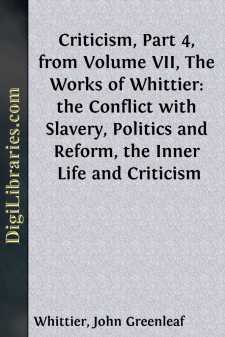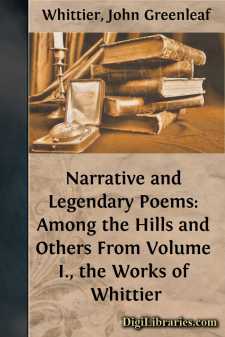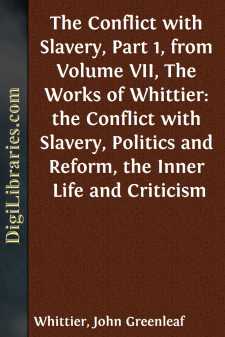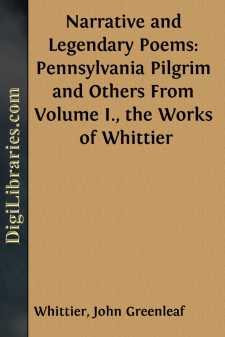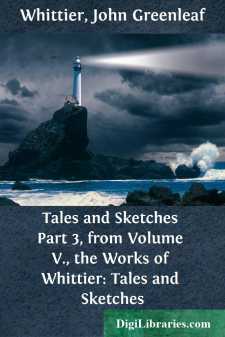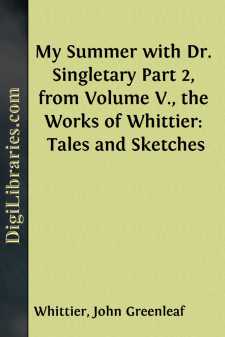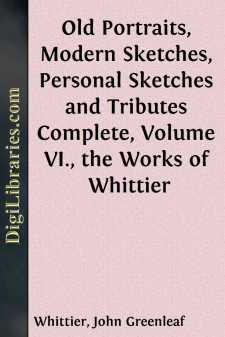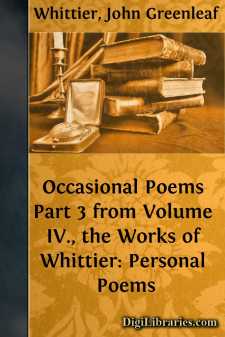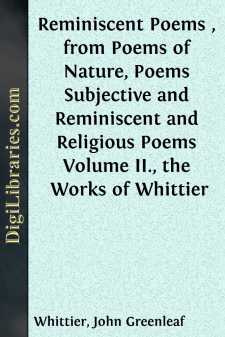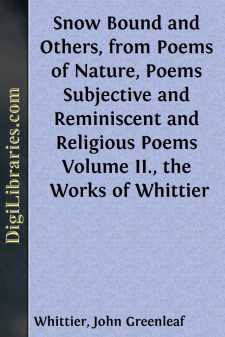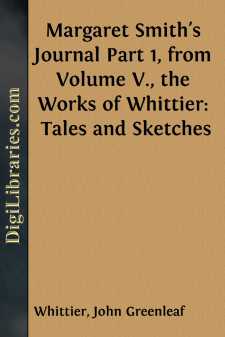Categories
- Antiques & Collectibles 13
- Architecture 36
- Art 48
- Bibles 22
- Biography & Autobiography 813
- Body, Mind & Spirit 142
- Business & Economics 28
- Children's Books 15
- Children's Fiction 12
- Computers 4
- Cooking 94
- Crafts & Hobbies 4
- Drama 346
- Education 46
- Family & Relationships 57
- Fiction 11829
- Games 19
- Gardening 17
- Health & Fitness 34
- History 1377
- House & Home 1
- Humor 147
- Juvenile Fiction 1873
- Juvenile Nonfiction 202
- Language Arts & Disciplines 88
- Law 16
- Literary Collections 686
- Literary Criticism 179
- Mathematics 13
- Medical 41
- Music 40
- Nature 179
- Non-Classifiable 1768
- Performing Arts 7
- Periodicals 1453
- Philosophy 64
- Photography 2
- Poetry 896
- Political Science 203
- Psychology 42
- Reference 154
- Religion 513
- Science 126
- Self-Help 84
- Social Science 81
- Sports & Recreation 34
- Study Aids 3
- Technology & Engineering 59
- Transportation 23
- Travel 463
- True Crime 29
Criticism, Part 4, from Volume VII, The Works of Whittier: the Conflict with Slavery, Politics and Reform, the Inner Life and Criticism
Description:
Excerpt
CRITICISM
EVANGELINE
A review of Mr. Longfellow's poem.
EUREKA! Here, then, we have it at last,—an American poem, with the lack of which British reviewers have so long reproached us. Selecting the subject of all others best calculated for his purpose,—the expulsion of the French settlers of Acadie from their quiet and pleasant homes around the Basin of Minas, one of the most sadly romantic passages in the history of the Colonies of the North,—the author has succeeded in presenting a series of exquisite pictures of the striking and peculiar features of life and nature in the New World. The range of these delineations extends from Nova Scotia on the northeast to the spurs of the Rocky Mountains on the west and the Gulf of Mexico on the south. Nothing can be added to his pictures of quiet farm-life in Acadie, the Indian summer of our northern latitudes, the scenery of the Ohio and Mississippi Rivers, the bayous and cypress forests of the South, the mocking-bird, the prairie, the Ozark hills, the Catholic missions, and the wild Arabs of the West, roaming with the buffalo along the banks of the Nebraska. The hexameter measure he has chosen has the advantage of a prosaic freedom of expression, exceedingly well adapted to a descriptive and narrative poem; yet we are constrained to think that the story of Evangeline would have been quite as acceptable to the public taste had it been told in the poetic prose of the author's Hyperion.
In reading it and admiring its strange melody we were not without fears that the success of Professor Longfellow in this novel experiment might prove the occasion of calling out a host of awkward imitators, leading us over weary wastes of hexameters, enlivened neither by dew, rain, nor fields of offering.
Apart from its Americanism, the poem has merits of a higher and universal character. It is not merely a work of art; the pulse of humanity throbs warmly through it. The portraits of Basil the blacksmith, the old notary, Benedict Bellefontaine, and good Father Felician, fairly glow with life. The beautiful Evangeline, loving and faithful unto death, is a heroine worthy of any poet of the present century.
The editor of the Boston Chronotype, in the course of an appreciative review of this poem, urges with some force a single objection, which we are induced to notice, as it is one not unlikely to present itself to the minds of other readers:—
"We think Mr. Longfellow ought to have expressed a much deeper indignation at the base, knavish, and heartless conduct of the English and Colonial persecutors than he has done. He should have put far bolder and deeper tints in the picture of suffering. One great, if not the greatest, end of poetry is rhadamanthine justice. The poet should mete out their deserts to all his heroes; honor to whom honor, and infamy to whom infamy, is due.
"It is true that the wrong in this case is in a great degree fathered upon our own Massachusetts; and it maybe said that it is afoul bird that pollutes its own nest....


